Riding mower vs push mower – which is best for you and your lawn?
I've tested dozens of lawn mowers, so to help you choose the perfect model for your yard, I've rounded up everything you need to know on choosing between a riding mower and a push mower
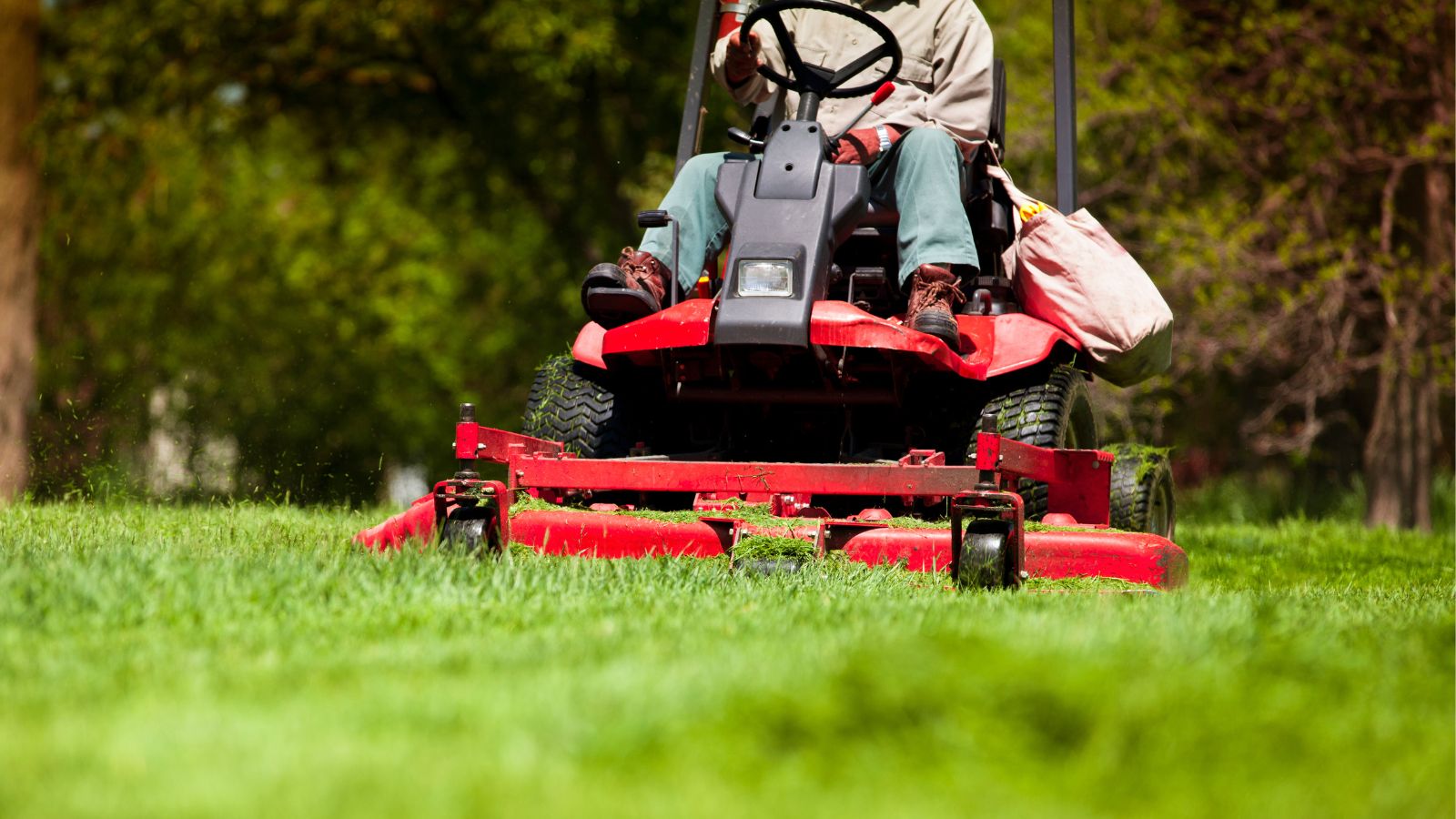

With the return of mowing season in full swing, many of us will be taking our mowers out of winter storage and revving them up to tackle our lawns.
However, spring is a time for change, and you might think that your little gas mower is no longer up to the task. Conversely, you may be looking at the big riding mower that's taking up room in your garage and wondering if you would be better off with something nimbler.
I've tested dozens of the best lawn mowers over the years, so I know exactly what to choose when it comes to the best ride on lawn mowers vs push mowers. I have also spoken to other lawn experts about which comes out on top. While one isn't better than the other, they suit different lawns and gardening styles, so it pays to understand which type is best for you and your outside space.
Head to head
Before we get started, here's a quick head-to-head of my favorite mowers, so you can see the differences between the two types.
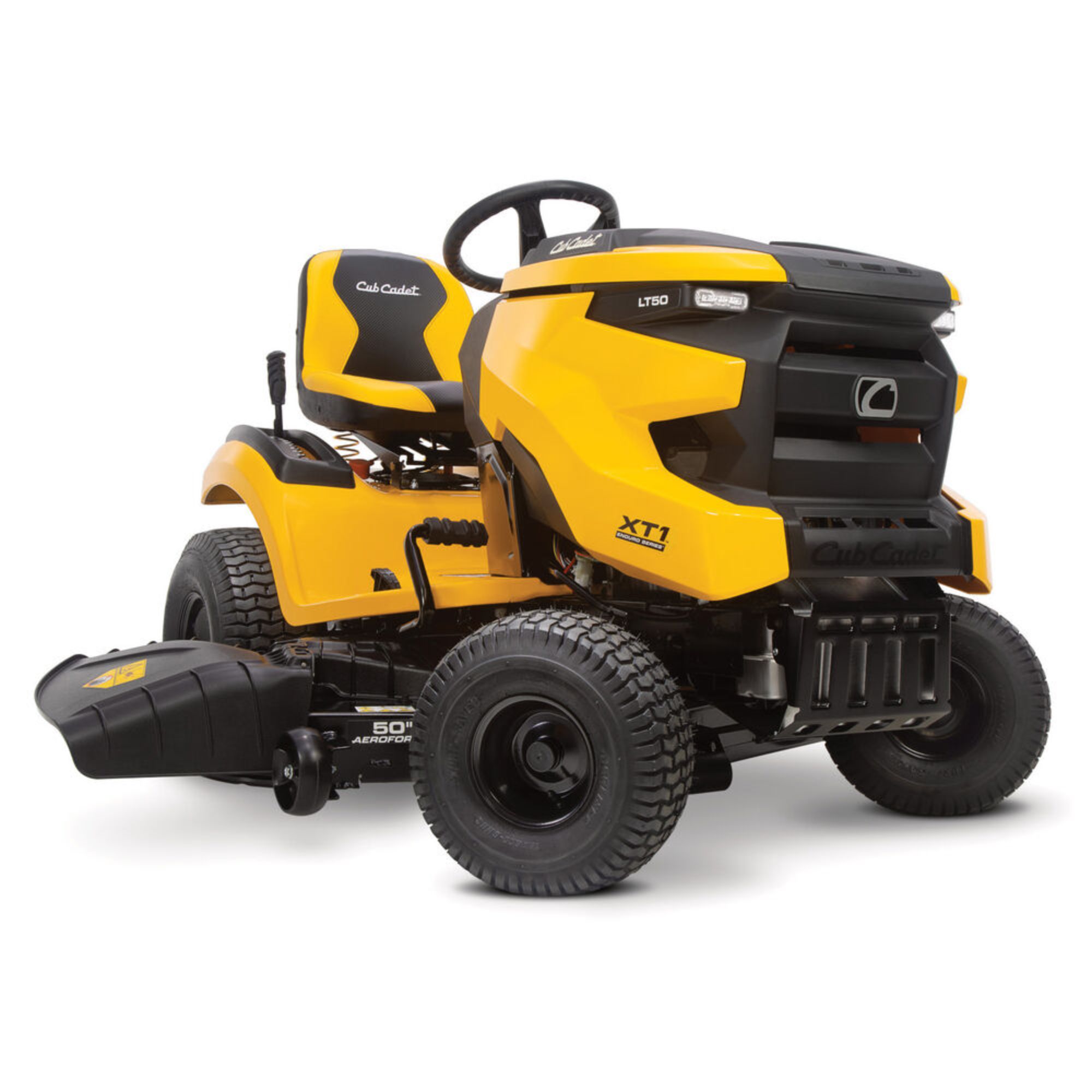
Type: gas riding mower
Deck width: 50"
Coverage: 2-4 acres
Cutting height range: 1" - 4"
RRP: $2799
This Cub Cadet is the gold standard of riding mowers. It has an enormous 50" cutting deck, so it can easily cover a 4-acre yard. For context, that's about three football fields' worth of turf. Of course, the downside is that it's pretty expensive.
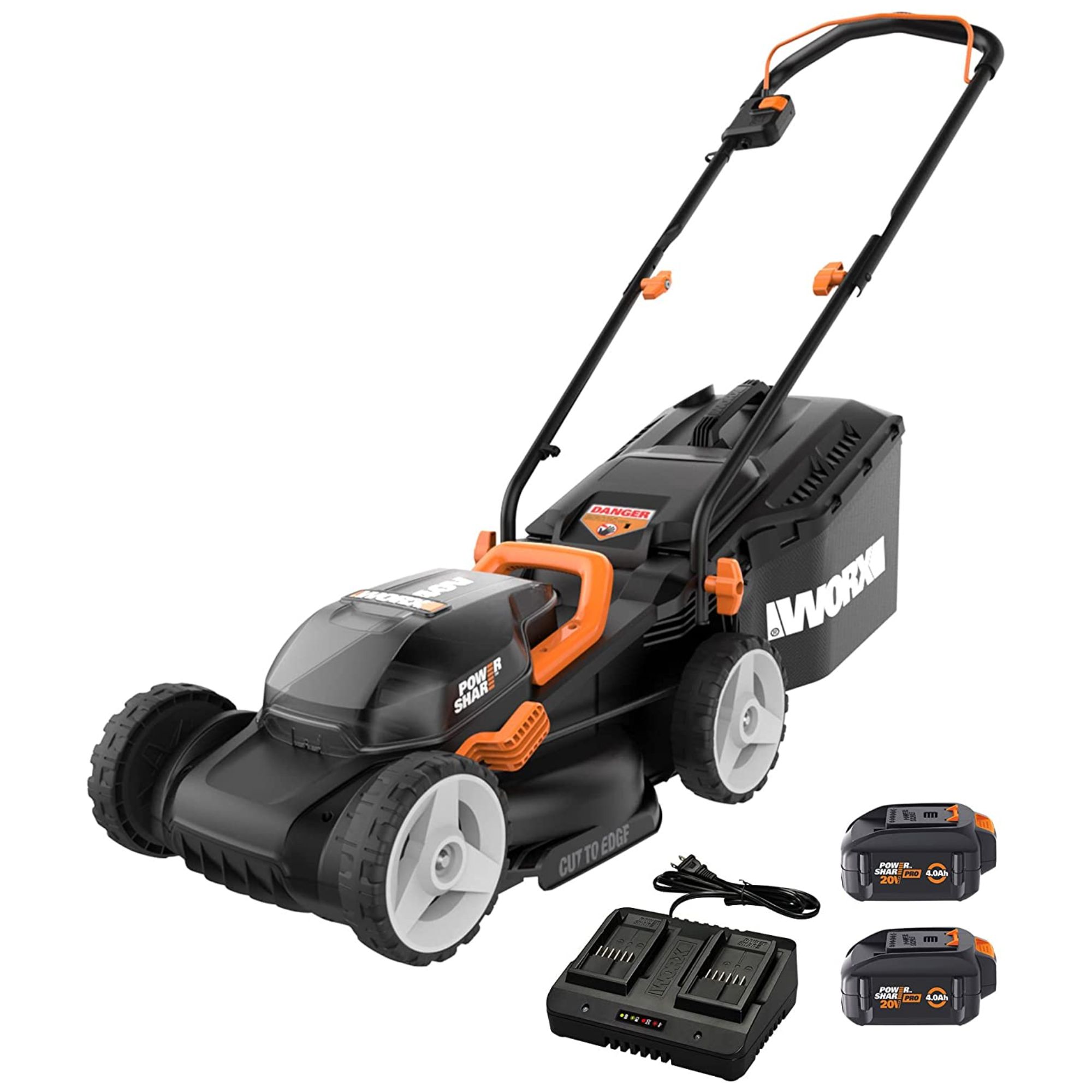
Type: cordless push mower
Deck width: 14"
Coverage: 1/8 acre
Cutting height range: 1.5"-3.5"
RRP: $299.99
This is my go-to lawn mower recommendation. It cuts incredibly closely, it's lightweight and easy to maneuver, and it's surprisingly good value. It's much cheaper than the Cub Cadet, but the deck is half the size. While it's only meant to cover 1/8th of an acre, I've tried it on larger yards of at least a half acre without any issues.
Riding mower: Pros
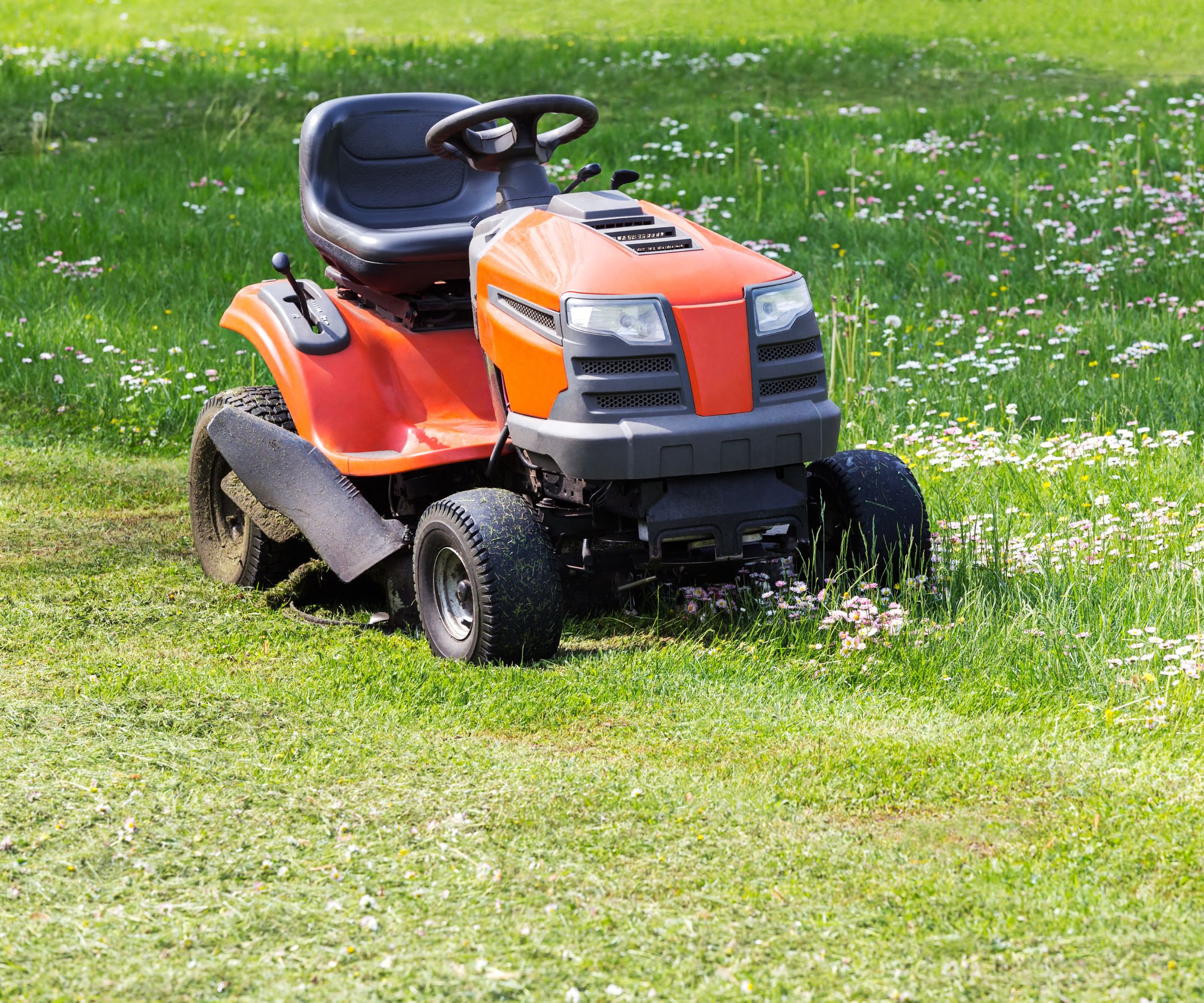
Riding mowers are great if you have a big yard. Push mowers are usually around 21", but entry-level riding mowers start at around 40". That means that riding mowers are faster than push mowers. Before you even get to the fact that riding mowers move faster across the grass, a wider deck covers more ground, and halves the amount of time it takes to mow your lawn.
In addition, riding mowers are fantastic if you have an uneven yard. If your yard slopes, a riding mower will save you a lot of effort from pushing a mower uphill or tackling bumps and dips. That also means a riding mower can be great if you have mobility issues and can't push a mower all over the garden.
Riding mowers also have utility beyond just mowing, too. It's not true of every model, but some manufacturers – for example, John Deere – offer snowplow and snowblower attachments. They aren't as good as a dedicated snow blower, shovel, or plow, but could save you work and buying a separate appliance.
Riding mower: Cons
However, the drawback of riding mowers is that they are incredibly expensive. Expect to pay $2000 for an entry-level model, and easily double that for a fancier option. That's more than four times the cost of an entry-level push mower. That's a big price inflation for a slightly faster and easier cut.
One of the best features of riding mowers is also one of their biggest drawbacks. A riding mower can mow a huge area in one pass, but this means that it lacks the finesse of a push mower. It can be trickier to get a neat cut along an edge with a riding mower than with a push mower. Even if you have a zero-turn mower, it won't be as precise as a push mower.
This size means that riding mowers are more likely to tear your grass. The heavy wheels are more liable to rip your grass, which leads to a worse and worse cut over time.
This same size means that riding mowers are hard to maintain. They need engine oil replacement, and flipping them over to sharpen the blades is more difficult because of their size and weight.
Because they're so big, riding mowers can also be difficult to store. Unlike most push mowers, they don't fold down for the winter months, and they take up about as much room floor space as a motorbike, so you need a big garage or shed to accommodate it.
Push mower: Pros
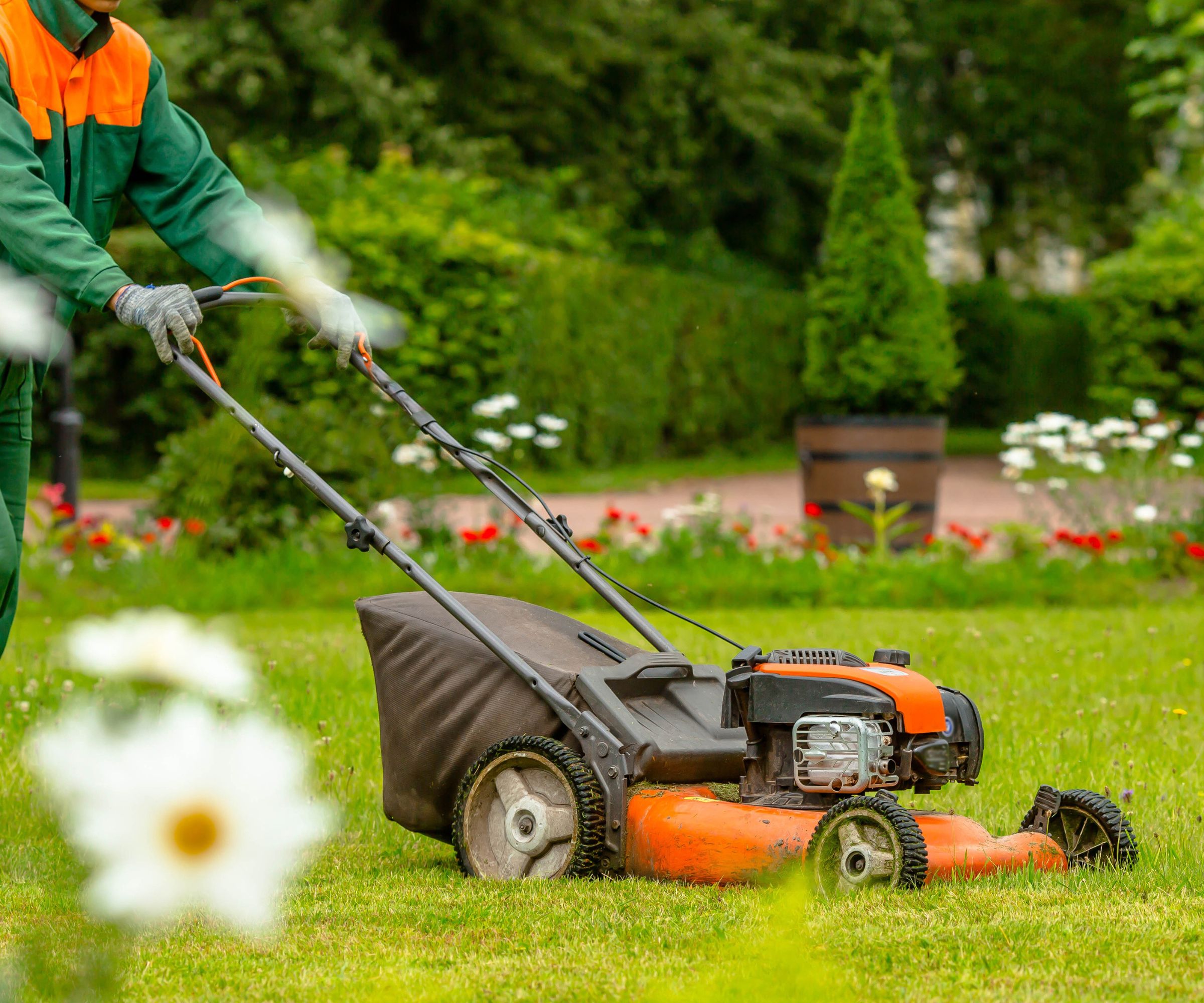
Lawn expert Bryan Clayton from Greenpal told me that 'push mowers are the bread and butter for a reason'.
Push mowers are much more precise because you get a clearer view of the grass as you mow. If there are patches of grass that need more attention, you can fix it on the spot, but you may not notice it from the seat of a riding mower. Push mowers are much better at cutting along the edge of a lawn because pushing a mower along with your hands offers closer control.
Regular maintenance is a key part of using a lawn mower, and it's much easier with a push mower than with a riding mower. Replacing the engine oil is a lot easier (and you don't even need to do this if you use a cordless or electric model). It''s simple to flip over a push mower and remove the blades for sharpening and maintenance.
If you're tight on space, you need a push mower. Not only are push mowers much smaller, but they can also fold, saving you even more room. If you don't have a big garage or shed, a push mower is perfect.
There are also financial considerations. You can get a good push mower for around $300, which is thousands of dollars cheaper than the cheapest riding mower.
Push mowers are also quieter, which your neighbors will appreciate. There's nothing worse than a loud riding mower waking you up early on a Sunday, and a push mower causes much less disturbance, especially if you use an electric or cordless mower.
Finally, there are just the basic health benefits of mowing the lawn. If you don't get much exercise, the simple act of pushing a mower around your yard is great exercise.
Push mower: Cons
A push mower is no good if you have a large yard. Bryan says that, 'push mowers are champions for small to medium yards, up to a quarter acre.'
You may also find a push mower a nuisance if you don't have a lot of outdoor power outlets. It only applies to the cheapest corded mowers, but the garden I grew up in was narrow but very long, and wrangling extension cords up and down that garden turned mowing from a fun afternoon to one of my least favorite chores.
Buy riding if:
- You have a big yard
- You have an uneven yard
- You have mobility issues
Buy push if:
- You have a small yard
- You're on a budget
- You want to get more exercise
FAQs
Can you use a riding mower as a snow plow?
You can use a riding mower as a snow plow, but you need a specialized snow plow attachment. It also depends on the level of snow. If the snow is too thick, your mower won't be able to push the weight, which could damage your mower's engine.
Do I need a zero-turn riding mower?
Needing a zero-turn riding mower depends on your yard. If you have a straight, uniform yard, you don't need one. However, if you have lots of flowerbeds and obstacles in your lawn, like trees, a zero-turn riding mower will make mowing much easier.
For more mowing tips and helpful advice, we explore why won't my lawnmower start and how to sharpen lawn mower blades in our dedicated features.
Sign up to the Homes & Gardens newsletter
Design expertise in your inbox – from inspiring decorating ideas and beautiful celebrity homes to practical gardening advice and shopping round-ups.

As a gardens and lifestyle contributor, Alex makes sure readers find the right information to help them make the best purchase. Alex got his start in reviewing at the iconic Good Housekeeping Institute, testing a wide range of household products and appliances. He then moved to BBC Gardeners’ World Magazine, assessing gardening tools, machinery, and wildlife products.
-
 Thoughtful modernism – how one Dallas home makes bold contemporary design feel warm, welcoming, and comfortable
Thoughtful modernism – how one Dallas home makes bold contemporary design feel warm, welcoming, and comfortableWith its mix of textural finishes and carefully curated furnishings, this modernist home is a refreshing retreat
By Karen Darlow Published
-
 'Wick away the ick' – 6 things people with clean laundry rooms always do to make this hardworking space shine
'Wick away the ick' – 6 things people with clean laundry rooms always do to make this hardworking space shineThese tips on how to clean your laundry room will banish grime
By Seraphina Di Mizzurati Published